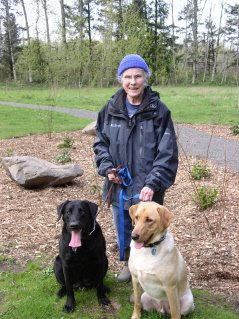Fifty Years of Protest
Kansas City in the late 1950s was a completely segregated town, and Negroes (as they were called then) were not welcome in most stores, restaurants, bars, etc. They truly did ride on the back of the bus. Children went to separate schools. They had their own hot spots, some which are famous now as the Kansas City Historic Jazz District. But back then…the only interactions whites had with blacks was as their servants or when they were “slumming” in the jazz bars.
My family was no different. We employed three generations of black women as maids starting with Anna who worked for my grandmother. Later her daughter, Beulah, worked for my parents, and Anna’s grand-daughter, Doris, cared for my father after my mother died. To their credit, my parents did insist on respect and courtesy toward these women. But my sister and I were stunned in later years to discover that neither of us remembered that family’s last name.
I drifted from the family pattern when I went to work for the YWCA in 1957 and met my co-worker and counterpart at the Negro Y whose name was Vi Fuller. She opened my eyes to how the other half lived, and suddenly I became aware of the insidious prejudice that existed in my home town. Vi introduced me to activists, both white and black, and we formed a group called Friendship Circle. We staged what may have been some of the first sit-ins at restaurants and hotels in Kansas City.
After a radio interview, I received many threats. Rotten eggs and tomatoes were thrown at my house. When we demonstrated, insults were hurled at us from many white professionals who worked nearby or patronized the targeted establishments. One really ugly confrontation took place in front of the Muelebach Hotel when several protestors were knocked to the ground by police officers.
When Vi and I traveled to Omaha for a conference, the hotel where the event was being held would not admit her. We skipped the conference and stayed with some of her relatives. It was the first time they had ever had a white person in their home. And the first time I had had a purely social interaction with a group of blacks. It was a learning experience for all of us! This was the beginning of a lifetime of civil rights advocacy for me.
Wherever she is…I send my good wishes to Vi Fuller to whom I am grateful for opening my eyes fifty years ago.
My family was no different. We employed three generations of black women as maids starting with Anna who worked for my grandmother. Later her daughter, Beulah, worked for my parents, and Anna’s grand-daughter, Doris, cared for my father after my mother died. To their credit, my parents did insist on respect and courtesy toward these women. But my sister and I were stunned in later years to discover that neither of us remembered that family’s last name.
I drifted from the family pattern when I went to work for the YWCA in 1957 and met my co-worker and counterpart at the Negro Y whose name was Vi Fuller. She opened my eyes to how the other half lived, and suddenly I became aware of the insidious prejudice that existed in my home town. Vi introduced me to activists, both white and black, and we formed a group called Friendship Circle. We staged what may have been some of the first sit-ins at restaurants and hotels in Kansas City.
After a radio interview, I received many threats. Rotten eggs and tomatoes were thrown at my house. When we demonstrated, insults were hurled at us from many white professionals who worked nearby or patronized the targeted establishments. One really ugly confrontation took place in front of the Muelebach Hotel when several protestors were knocked to the ground by police officers.
When Vi and I traveled to Omaha for a conference, the hotel where the event was being held would not admit her. We skipped the conference and stayed with some of her relatives. It was the first time they had ever had a white person in their home. And the first time I had had a purely social interaction with a group of blacks. It was a learning experience for all of us! This was the beginning of a lifetime of civil rights advocacy for me.
Wherever she is…I send my good wishes to Vi Fuller to whom I am grateful for opening my eyes fifty years ago.


0 Comments:
Post a Comment
<< Home